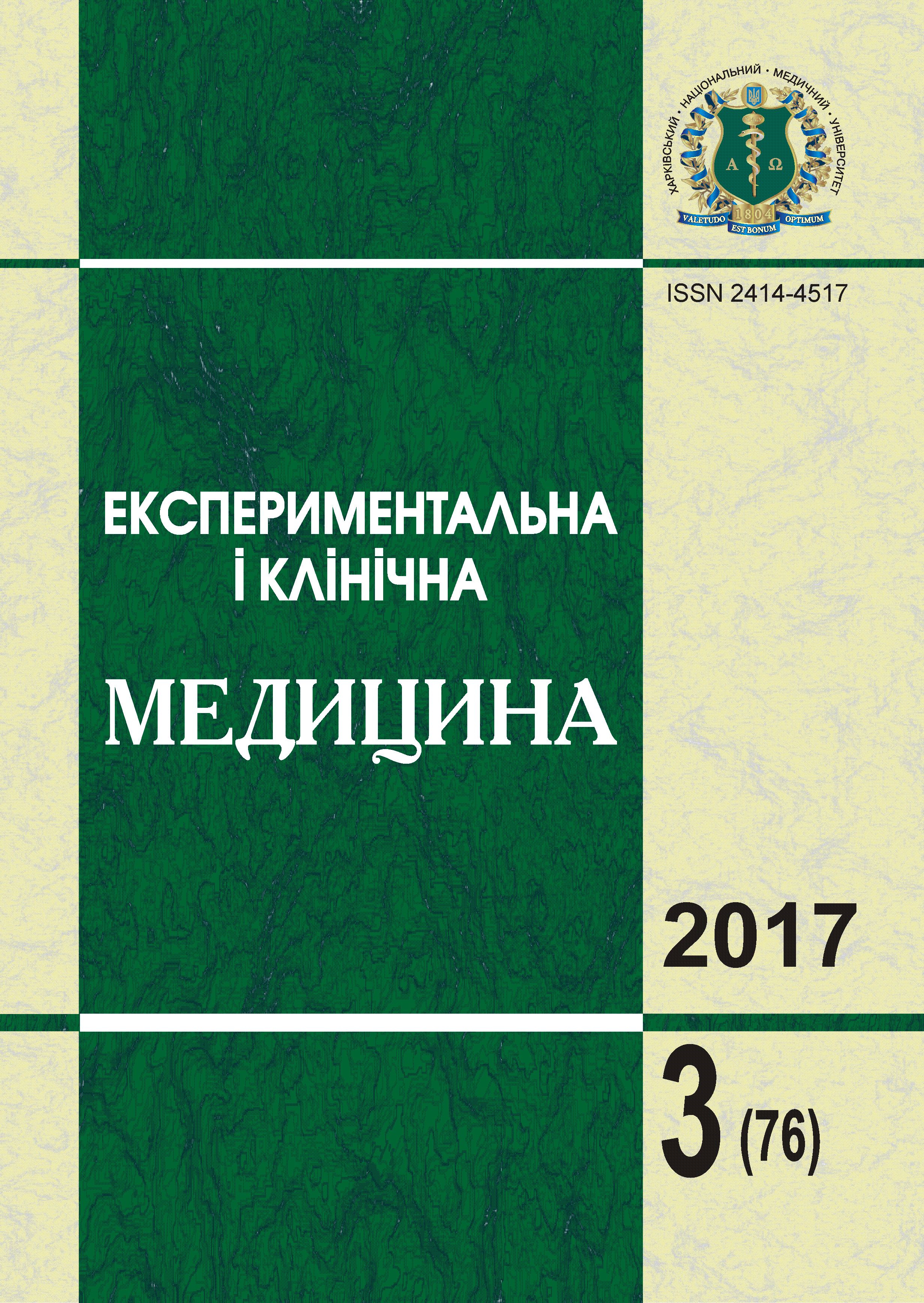Abstract
The purpose of our study was to study the informativeness of levels of markers of myocardial damage. The process of anesthesia and early postoperative period was studied in 40 patients with acute coronary syndrome, in which was held cardiopulmonary bypass grafting. Blood concentrations of markers of myocardial damage аnd indicators of hemodynamics were determined. The degree of communication between marker levels and hemodynamic indices was studied. It was found that in patients with acute coronary syndrome with heart failure, the most sensitive marker of myocardial damage іs troponin I. The levels of troponin I and CFC reflect the degree of diastolic dysfunction of the myocardium. The levels of NT-proBNP reflect the state of the systolic function of the myocardium, while the reduction of the cardiac output is closely related to its level.References
London M.J., Mittnacht A.J., Kaplan J.A. (2006). Anesthesia for myocardial revascularisation, In Kaplan's Cardiac Anesthesia, ed by Kaplan J.A., Reich D.L., Lake C.L., Konstadt S.N., 5th edition, Philadelphia, Saunders Elsevier, 585-644.
Chaitman B.R. (2003). A review of the GUARDIAN trial results: Clinical implications and the significance of elevated perioperative CK-MB on 6-month survival // J. Card. Surg., 18 (Suppl. 1), 13–14.
Erhardt L.R. (1999). Guard during Ischemia Against Necrosis (GUARDIAN) trial in acute coronary syndromes. Am. J. Cardiol., 83. Р. 23–27.
Theroux P., Chaitman B.R., Danchin N. et al. (2000). Ingibition of the sodium-hydrogen exchanger with cariporide to prevent myocardial infarction in high-risk ischemic situa¬tions. Main results of the GUARDIAN trial. GUARD during Ischemia Against Necrosis (GUARDIAN) Investigators. Circulation, 2, 303–-3036.
Vanderheyden M., Bartunek J., Goethals M. (2004).б Brain and other natriuretic peptides: molecular aspects // Eur. J. Heart Failure, 6, 261–268.
Kazanegra R., Cheng V., Garcia A. et al. (2001). A rapid test for B-type natriuretic pep¬tide correlates with falling wedge pressures in patients treated for decompensated heart failure: a pilot study // J. Card. Failure., 2001, Vol. 7, p. 21–29.
De Lemos J.A., McGuire D.K., Drazner M.H.(2003). B-type natriuretic peptide in car¬diovascular disease. Lancet, 2003, Vol. 362, p. 316-322.
Gardner R.S., Henderson G., McDonagh T.A. (2005). The prognostic use of right heart catheterization data in patients with advanced heart failure: how relevant are invasive procedures in the risk stratification of advanced heart failure in the era of neurohormones // J. Heart and Lung Transplantation v. 24, p. 303–309.
Ostrovskiy O.V., Tkacheva V.V., Ostrovskaya V.O. (2013). Laboratornye markery povrezhdeniya miokarda v sovremennoy kardiologii // Laboratoriya. № 2.p. 31–37.
Bevilacqua, M. Endothelial cell – leukocyte adhesion molecules // Ann. Rev. Immunol. 1993. Vol. 11. P. 767–773.
